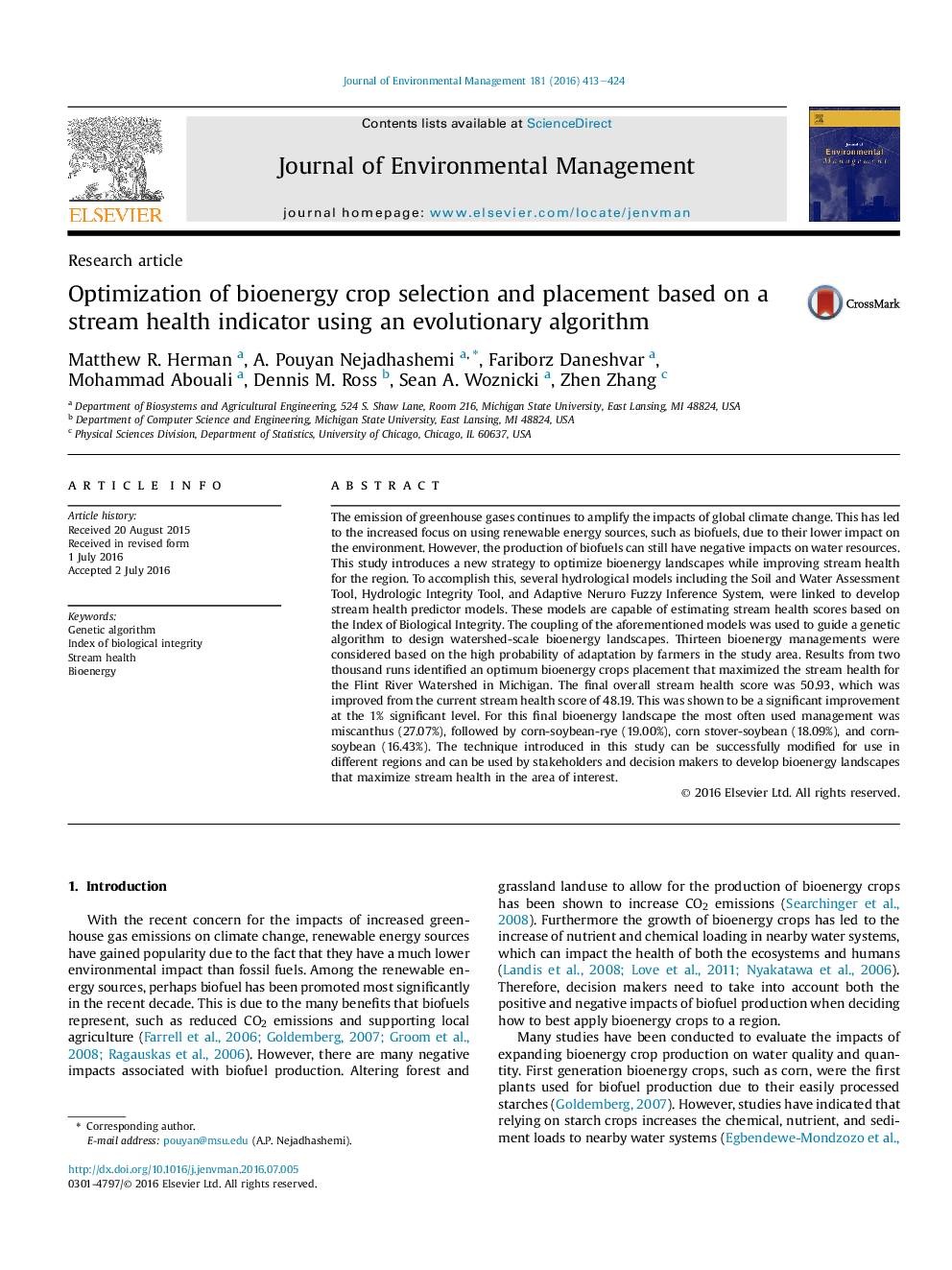| Article ID | Journal | Published Year | Pages | File Type |
|---|---|---|---|---|
| 7479696 | Journal of Environmental Management | 2016 | 12 Pages |
Abstract
The emission of greenhouse gases continues to amplify the impacts of global climate change. This has led to the increased focus on using renewable energy sources, such as biofuels, due to their lower impact on the environment. However, the production of biofuels can still have negative impacts on water resources. This study introduces a new strategy to optimize bioenergy landscapes while improving stream health for the region. To accomplish this, several hydrological models including the Soil and Water Assessment Tool, Hydrologic Integrity Tool, and Adaptive Neruro Fuzzy Inference System, were linked to develop stream health predictor models. These models are capable of estimating stream health scores based on the Index of Biological Integrity. The coupling of the aforementioned models was used to guide a genetic algorithm to design watershed-scale bioenergy landscapes. Thirteen bioenergy managements were considered based on the high probability of adaptation by farmers in the study area. Results from two thousand runs identified an optimum bioenergy crops placement that maximized the stream health for the Flint River Watershed in Michigan. The final overall stream health score was 50.93, which was improved from the current stream health score of 48.19. This was shown to be a significant improvement at the 1% significant level. For this final bioenergy landscape the most often used management was miscanthus (27.07%), followed by corn-soybean-rye (19.00%), corn stover-soybean (18.09%), and corn-soybean (16.43%). The technique introduced in this study can be successfully modified for use in different regions and can be used by stakeholders and decision makers to develop bioenergy landscapes that maximize stream health in the area of interest.
Related Topics
Physical Sciences and Engineering
Energy
Renewable Energy, Sustainability and the Environment
Authors
Matthew R. Herman, A. Pouyan Nejadhashemi, Fariborz Daneshvar, Mohammad Abouali, Dennis M. Ross, Sean A. Woznicki, Zhen Zhang,
